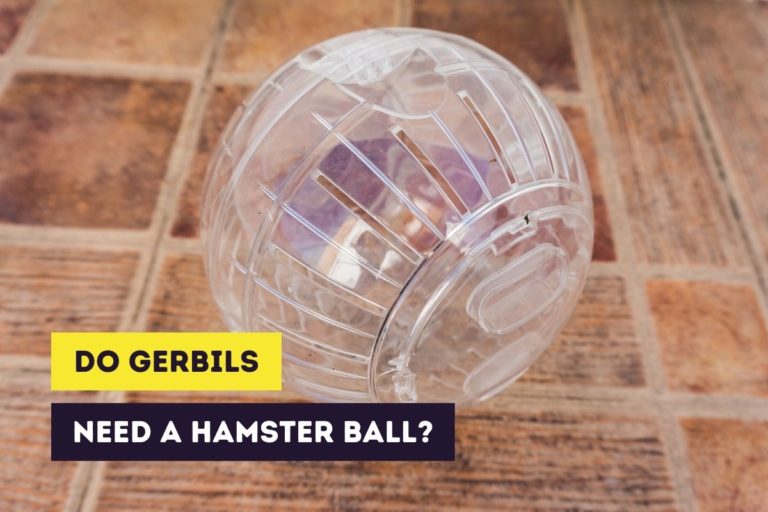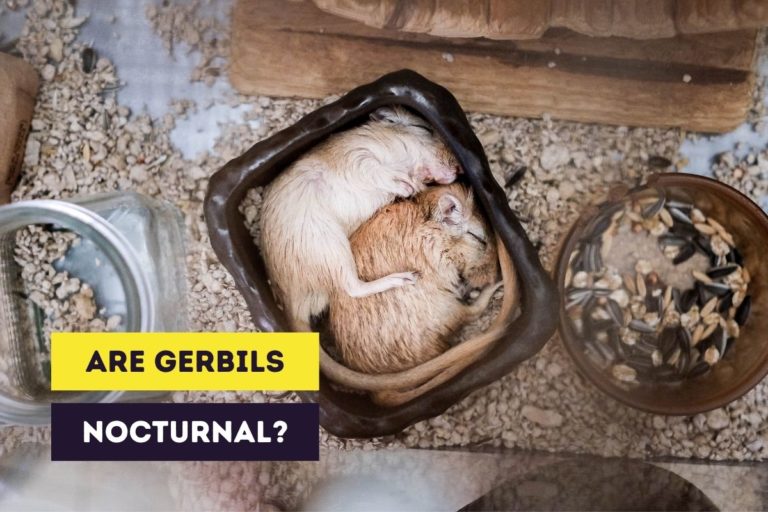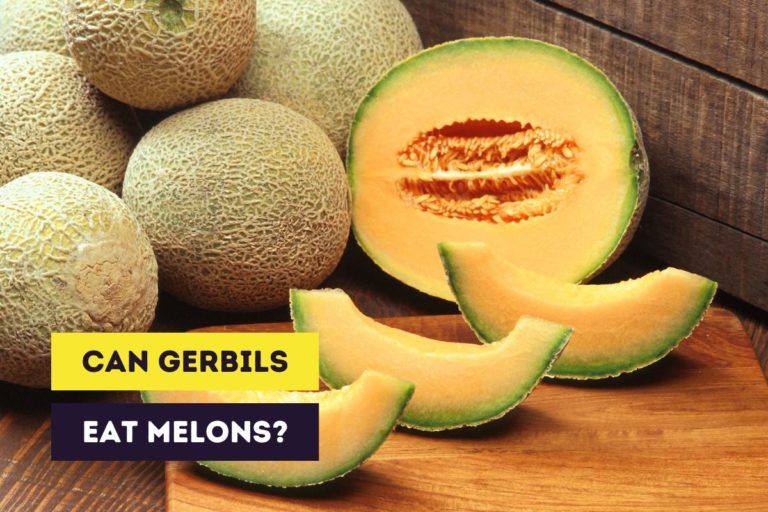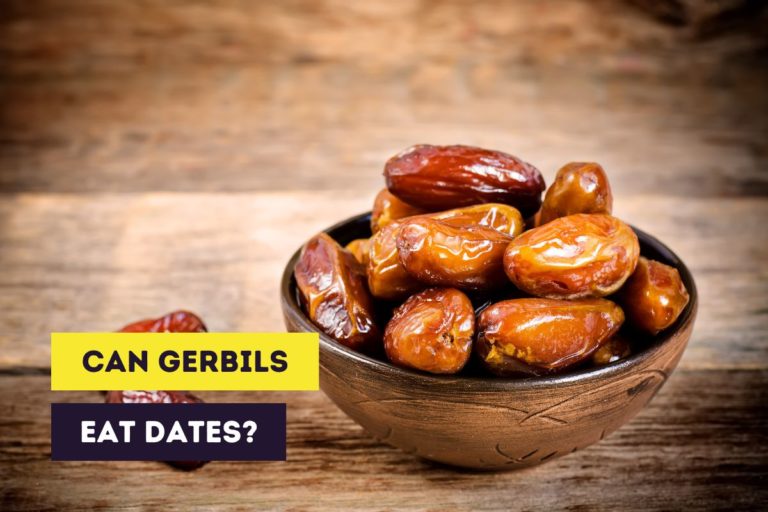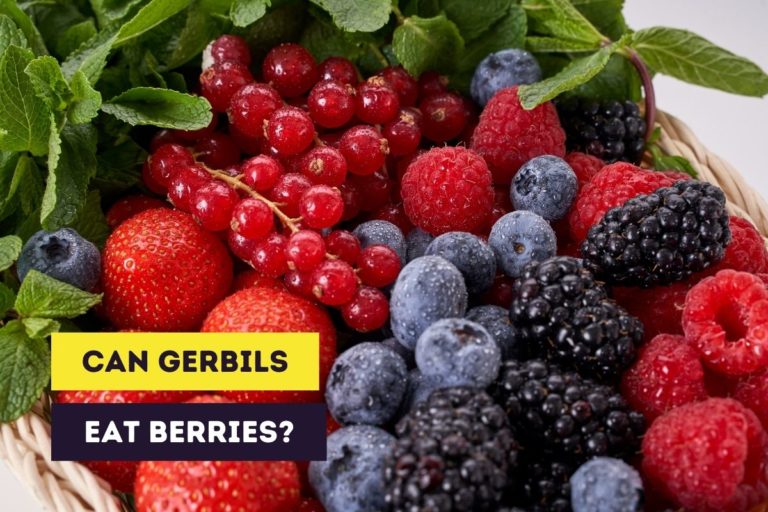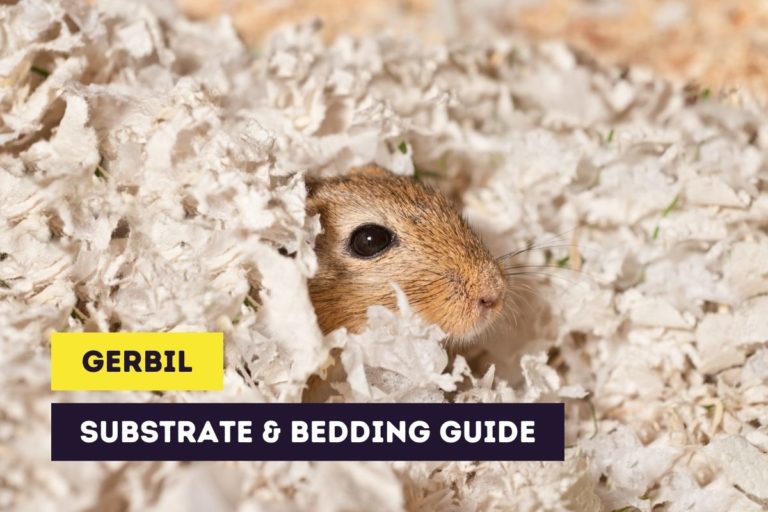Gerbil Dietary Questions: Can Pet Gerbils Eat Watermelon?
When you think of a refreshing snack you’ll probably think of watermelons. This fruit is popular around the world and you might want to give a small piece to your gerbils. But most fruit is high in sugar, which can be dangerous for gerbils. So, what about watermelons? Can gerbils eat watermelons?
Gerbils can eat fresh and dried watermelons but only as an occasional treat. Fresh watermelons should be given in small pieces because of the high percentage of water in it. You can also give small dried or dehydrated watermelon pieces that contain all nutrients but only a little bit of water.
Watermelons can be healthy snacks but the main (staple) diet should still consist of a seed mix or pellet food, especially for owners that aren’t used to keeping gerbils as pets. A good seed mix and pellet food will contain all nutrients that your gerbils need. It reduces the risk of health issues that are caused by an improper diet.
You should only give a small piece of watermelon to your gerbils and only as a treat. There are several ways to feed watermelons to your gerbils and some are better than others.
In this article, you’ll learn a little bit about the nutritional value of watermelons and why they’re suitable as a treat for your gerbils and not as the foundation of a gerbil diet. Finally, you’ll learn how to feed them to your gerbils.
This site contains affiliate links to products we recommend and use ourselves. We may receive a commission for purchases that you make through these links. If you’re interested in learning more about our affiliate links, please visit our (affiliate) disclaimer.
Do Wild Gerbils Eat Watermelons?
Watermelons are widely available as fruit but they are native to North and West Africa. The watermelon plant does best when it can grow in full sunlight and in moist soil. Watermelon plants can tolerate high temperatures and don’t need a lot of water.
As you probably already know, gerbils live in arid regions and the Mongolian gerbil is no exception to this. Mongolian gerbils live in a region with grassland, shrubland, and desert and are used to living with only a limited amount of water.
The temperatures in the natural habitat of these gerbils can get up to 50 °C (122 °F) although usually the temperatures are lower at normal room temperatures. Water is scarce in this region and you would think that a watermelon plant wouldn’t grow well in this region. It’s not native to the region but, with a little bit of help, watermelons are now also grown in the Gobi desert.
Wild Mongolian gerbils didn’t come in contact with watermelons but it’s possible that other gerbil species (that live in Africa) did come in contact with (ancestors) of the watermelon plant. Seeds of the watermelon plant have for example been found in ancient tombs of pharaohs.
Mongolian gerbils will eat seeds, roots, bulbs, and herbs. When they’re available gerbils will also eat fruit and insects but this depends on the time of year and the region they live in.
So, wild Mongolian gerbils don’t have the watermelon on their plate but this doesn’t mean that pet gerbils won’t eat watermelons when they’re given to them. However, gerbils don’t get a lot of nutritional value from them and don’t need them to stay healthy.
Nutritional Value of Watermelon
I already mentioned that the nutritional value of watermelon is low for gerbils but this doesn’t mean that they don’t have any nutrients in them. The following nutritional data (for 100 g) comes from FoodData Central:
| Name | Amount | Unit |
|---|---|---|
| Water | 91.45 | g |
| Energy | 30 | kcal |
| Protein | 0.61 | g |
| Total lipid (fat) | 0.15 | g |
| Carbohydrate, by difference | 7.55 | g |
| Fiber, total dietary | 0.4 | g |
| Sugars, total including NLEA | 6.2 | g |
| Calcium, Ca | 7 | mg |
| Iron, Fe | 0.24 | mg |
| Magnesium, Mg | 10 | mg |
| Phosphorus, P | 11 | mg |
| Potassium, K | 112 | mg |
| Sodium, Na | 1 | mg |
| Zinc, Zn | 0.1 | mg |
| Copper, Cu | 0.042 | mg |
| Selenium, Se | 0.4 | µg |
| Vitamin C, total ascorbic acid | 8.1 | mg |
| Thiamin | 0.033 | mg |
| Riboflavin | 0.021 | mg |
| Niacin | 0.178 | mg |
| Vitamin B-6 | 0.045 | mg |
| Vitamin B-12 | 0 | µg |
| Vitamin B-12, added | 0 | µg |
| Vitamin A, RAE | 28 | µg |
| Carotene, beta | 303 | µg |
| Carotene, alpha | 0 | µg |
| Cryptoxanthin, beta | 78 | µg |
| Lycopene | 4532 | µg |
| Lutein + zeaxanthin | 8 | µg |
| Vitamin E (alpha-tocopherol) | 0.05 | mg |
| Vitamin E, added | 0 | mg |
| Vitamin D (D2 + D3) | 0 | µg |
| Vitamin K (phylloquinone) | 0.1 | µg |
| Fatty acids, total saturated | 0.016 | g |
| Fatty acids, total monounsaturated | 0.037 | g |
| Fatty acids, total polyunsaturated | 0.05 | g |
| Cholesterol | 0 | mg |
| Caffeine | 0 | mg |
| Theobromine | 0 | mg |
Are Watermelons Good or Bad for Gerbils?
A normal gerbil diet needs to consist of around 16 percent protein and between 6 and 9 percent fat. As you can see in the table above watermelons are low in carbohydrates, protein, fat, and fiber but very high in water.
About 92 percent of the watermelon is water which can cause diarrhea in gerbils since gerbils aren’t used to consume a lot of water. Watermelons are also a fruit with a relatively high sugar percentage, although it’s lower than some other fruit, like grapes and bananas.
To determine the good and bad aspects of the watermelon, I’ll get into the following aspects:
- calcium to phosphorus ratio
- magnesium content
- water percentage
Calcium to phosphorus ratio of watermelons
The calcium to phosphorus ratio is an important ratio between two minerals. It’s important for bone growth and bone health in humans and also in rodents. For gerbils, the amount of calcium should be 5.0g/kg diet and the amount of phosphorus should be 3.0g/kg diet. Based on this data the right calcium to phosphorus ratio is around [1.7]:[1].
The calcium to phosphorus ratio of a watermelon is [1]:[1.6], which is also an indication that it isn’t good as part of the main diet. However, if you only give watermelons as a treat and only on occasion the calcium to phosphorus ratio isn’t very important.
Magnesium content of watermelons
Magnesium is an important mineral for gerbils because of their susceptibility to seizures. Gerbils can get seizures when they experience stress and also are known to get seizures when in a new environment.
There’s also a nutritional aspect to these seizures. A low amount of magnesium is known to lead to a higher risk of getting seizures for gerbils in new environments. Watermelons are a fruit that only has a medium level of magnesium and so would probably have little influence in reducing seizures, especially in the small amounts as a treat.
Water content of watermelon
About 92 percent of a watermelon is water. However, gerbils don’t need to drink a lot of water and are used to live in arid regions without water. Wild gerbils will get their water from their food but when a gerbil drinks too much water or ingests food with a high percentage of water it can lead to diarrhea.
The water content in watermelon can be good for gerbils if you only give a small piece of it. Don’t give it too much or your gerbil can get diarrhea and always keep an eye on your gerbil when you give it the first time to see if it leads to diarrhea or other health issues.
Conclusion
The calcium to phosphorus ratio, magnesium levels, and water percentage in watermelons will have only a limited influence on your gerbil when you feed watermelons as a snack. But watermelons are not really nutritional for gerbils. They won’t hurt your gerbil (although can cause diarrhea if given too much) and are not especially bad or good for gerbils. So, only give watermelon as a snack or treat a watermelon.
Feeding Watermelons to Gerbils
What kind of watermelons can be eaten by gerbils?
Watermelons are edible fruit and you can find watermelons almost anywhere in the world. They can be eaten in different ways:
- fresh
- dried or dehydrated
Below, you’ll find the most common ways to feed watermelon to gerbils. In short, gerbils can be fed:
- fresh seedless watermelons
- dried or dehydrated seedless watermelons
There are also certain treats that you can buy online or in pet stores that contain a watermelon flavor (but no real watermelons).
Fresh watermelons
Fresh watermelons are the most common way to give watermelon to gerbils. It’s recommended to give seedless watermelons. You will have to be careful that you give the watermelon pieces in a food bowl (and why not this cute food bowl) or on a platform where your gerbils can eat them. Always check if there are leftover pieces and take them away when they’re not eaten after a few hours.
Dried or dehydrated watermelons
Dried or dehydrated watermelon goes through a process where most water is removed from the watermelon. The result is a smaller piece of watermelon that is deep red and looks wrinkled. Dried watermelons are sometimes also called watermelon chips (but are not baked or fried as other chips).
Dried or dehydrated watermelons can be compared to fresh watermelons when it comes to nutrition but are easier to chew for gerbils and don’t go bad as fast as fresh watermelons. As they contain very little water, dried watermelons are also better than fresh watermelons (as they are less likely to cause diarrhea)
If you want to dehydrate watermelons you can use a food dehydrator.
Commercial watermelon flavored treats
There are some treats, like the Vitakraft Drops, that contain watermelon flavor. Most of them are high in sugar and fat content but some can be given for their purpose, a treat to be given on occasions.
How many times to feed watermelons?
There are some gerbil owners that give their own balanced diet consisting of seeds, vegetables, plants, herbs, and fruit to their gerbils. However, there exist enough good commercial diets that offer all the nutrients needed.
If you’re a new gerbil owner and don’t have experience with balancing the diet of a gerbil, your gerbils will benefit the most from a commercial seed mix or pellet food that has a high nutritional value. Add a watermelon (or a watermelon-flavored treat) as a treat once or twice a week.
How many watermelons can you feed?
Gerbils are small pets and normally don’t eat a lot of food (although they can hoard a lot). Give only a small slice (not larger than their head) of the fresh watermelon for each gerbil or give a small amount of dried or dehydrated watermelon.
Want to Learn More?
If you’re interested in learning more about gerbils as pets, please read the following articles:
If you’re interested in getting gerbils as pets you should also definitely read our beginner’s guide to keeping gerbils as pets and our gerbil care guide.

